Leeham News and Analysis
There's more to real news than a news release.
United: the road back
By Bjorn Fehrm
Introduction
February 1, 2017, ©. Leeham Co: A headline from one year ago read: “UNITED’S QUEST TO BE LESS AWFUL: A bungled merger. A corruption scandal. Three CEOs in a year. But hey, at least the snacks are free again.” (Bloomberg 14 January 2016).
“Things have changed, but not everything is fixed yet,” said Gary Laderman, United’s SVP Finance, Procurement and Treasurer, at the Airline Economics Growth Frontiers conference in Dublin last week.
Laderman then candidly went through the history, the fixes and why there is more to come.
Discussion
United’s’ challenges
“We started our way back with our new CEO, Oscar Munoz,” said Laderman. “Then he had a heart attack and we had to step in for him for a while. He got a heart transplant and is now back stronger than ever. We had some changes on our board, in our management team and I now hold our management team as probably the best in the industry.”
He continued, “Since last year a lot has changed for the better. A key factor in that work is that we now have all labor agreements in place. It didn’t come cheap, but our front line people are now coming to work more motivated than ever to improve how we engage with our customers.”
“We also have a good network,” he said. “Our hubs are where people want to travel. (Figure 2.) The hubs work well for domestic travel as well as gateways for trans- Atlantic, Latin America and trans-Pacific travel. Yet we have challenges.”
Strategic mistake since the merger
“Our long haul network is the best among our peers.”says Laderman. “Both United and Continental pre-merger had great international coverage. We both joked, ‘The only reason we had a domestic network was to feed the international network.’ The money was made internationally, the domestic network was break-even at best.
“What this led us to do over the last five years, through to last year, was focusing on the international network,” Laderman said, “at the expense of the domestic network. Domestically, we thinned out frequency, flew smaller aircraft and to fewer places. (Figure 3.) All the things that a business traveler doesn’t want. He want frequency and he wants space on the aircraft when he books at the last minute and he wants to fly everywhere.”
Laderman said this approach led to the principal problem United faced.
“Over the last five years in the US, the business flipped. Domestic traffic grew and so did its profitability. International did not turn unprofitable, but it could no longer compensate for a weak domestic offering. Our peers had their strength domestically and this is the reason they presented stronger results than us in recent years,” said Laderman.
“We are now doing what we need to do to turn this around. For example, New York (Figure 4). We were the strongest there with 30% of all traffic,” he said. “We are now at 26% and no longer the strongest carrier. What was the reason? We didn’t have the best banked schedules (banked = wave of connections during the day which fit together). We are fixing that.”
He said the same was true in Chicago. “We were weak in connections east-west. American Airlines, the other strong airline at Chicago, had better banked schedules than we. We are on that, and you will see changes over the next year’s.
Focusing on the customer
“Finally,” he said, “we need to focus the customer’s will to only pay for what he wants. We used to have the traditional two class domestic offering, Domestic First and Economy class. What we needed to do was structure our offering so we could offer a fare to compete with the Low Cost Carriers. We introduced Basic Economy. We also added Premium Economy called Economy Plus.”
Laderman said United is also investing heavily in is information technology. Figure 6 shows the problem.
“We issue 27,000 flight plans a day, we decide on 1m workforce staffing events and do 1.5m baggage scans a day.” said Laderman
“Any issue in these systems quickly escalates to front page news. Despite being 63% better than five years ago, we still need to improve. We are investing an additional $2bn in technology to improve this further,” he said.
Fleet
Laderman told us the goal for United’s fleet plan was to have total flexibility whichever way the industry took going forward. After investing in a fleet which is the youngest among the peers, the low oil price now allows United to tap into used aircraft markets.
The airline is acquiring 28 Airbus A319s to complement the fleet. The goal for United is to increase the span of capacity flexibility it has in the fleet, Figure 7.
Unencumbered aircraft stand for aircraft owned without loans, aircraft that United can park or sell at ease. A mix with leased aircraft increases this flexibility. The actions to reach the flexibility goal and lower capital expenses for United is shown in Figure 8.
Our comments to United’s fleet plans
United has 51 Boeing 767s with an average age of 19.5 years and 77 Boeing 757s with an average age of 18.9 years. United is adding the Scimitar winglet to the 757s to improve fuel economy. It’s also been modernizing the interiors on some 767s. The moves indicate United plans to keep the airplanes beyond 2020, but these are aging and replacements are needed.
United has 100 Boeing 737-9 MAXes on order, which will replace some of the domestic 757 operations. The carrier has 21 757-300s, for which the MAX 9 is too small to replace on a seat-for-seat basis.
The 767s are divided between the -300ER (35) and the -400 (16). These are ripe targets for a prospective Boeing 7M7 or Airbus A330neo replacement. There are 35 Airbus A350-1000s on order. These were intended to replace the Boeing 747-400.
United ordered 14 Boeing 777-300ERs, believed to be at sharply discounted pricing as Boeing struggled to fill the production bridge between the 777 Classic and the 777X. These allowed United to accelerate retirement of the 747s.
Officials said they are reviewing the -1000 order with the prospect of shifting at least some of these to smaller aircraft. This review continues.


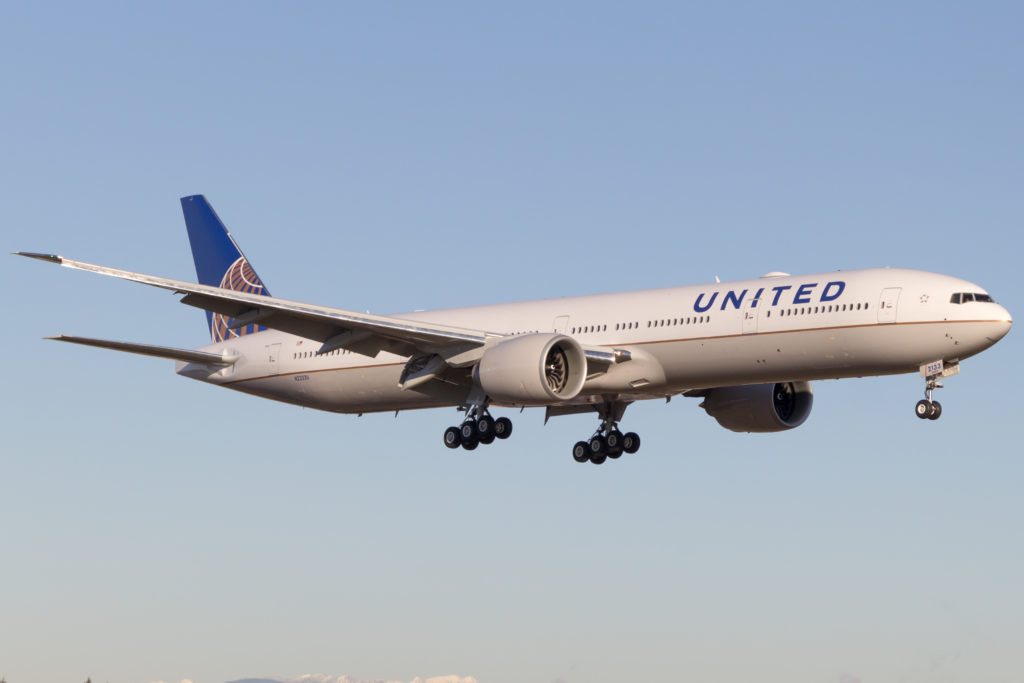
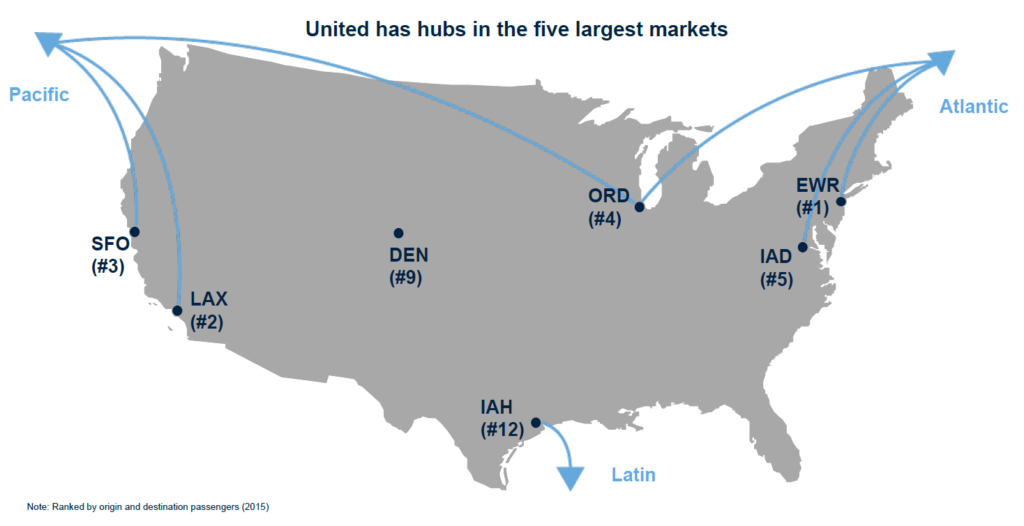

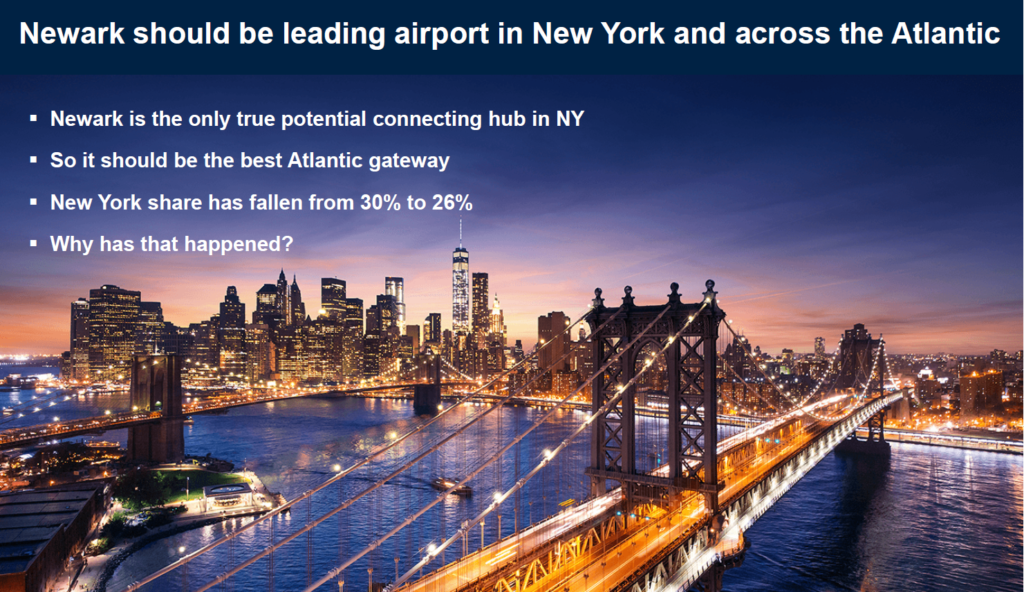
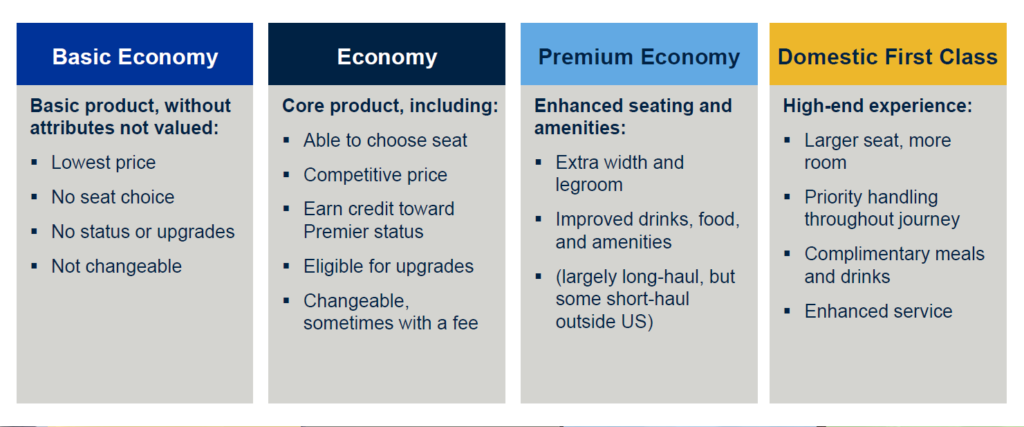
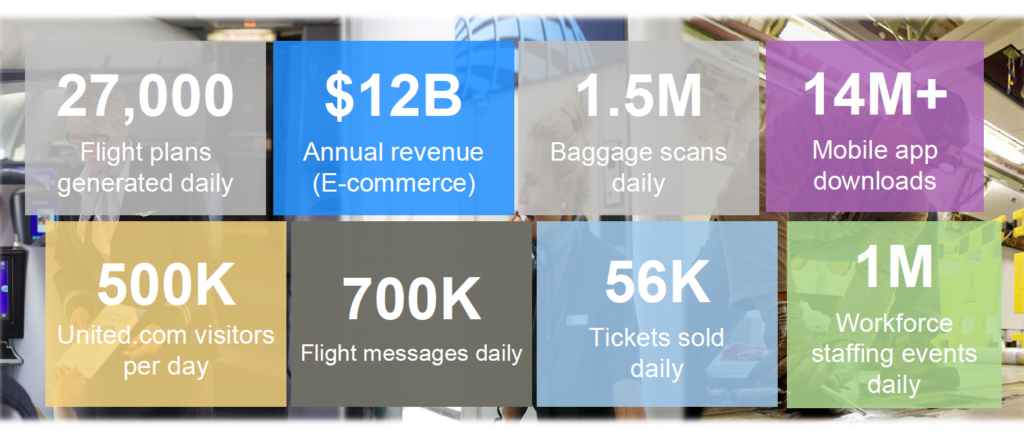
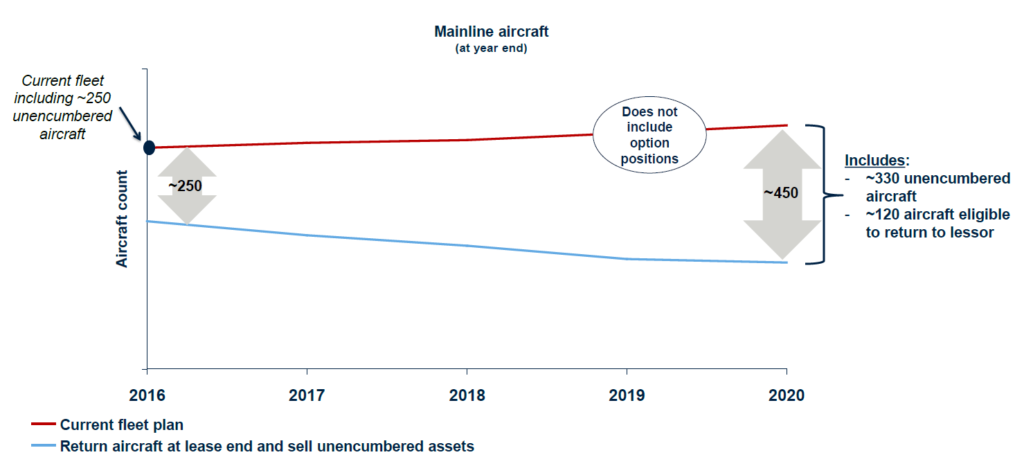

Customer service is mostly abismal. Not usually the staff at the airport, but some of those were so poorly trained that they gave false information or could not understand my problem. I’m 6’6″ tall and cannot fit into the now common economy seat. I now fly only first class or economy plus. I flew 3 trips on United last year. The one in first class was not an issue. The other two I was bounced to regular economy for at least 1 leg of each trip. I found this out on board the aircraft. No notice before hand and after I was assured by staff I was in economy plus. I was helped out by friendly passengers, 1 flight crew and some airport staff. None of that should have been necessary.
And with basic economy, the system gets yet more complicated. Keeping it simple has some efficiency and predictability benefits.
Totally agree. United’s inability to accommodate especially tall people is a huge strategic disadvantage.
Long time, “loyal” UA flyer observes: 1) there’s been noticeable, albeit limited, improvement in their ops and “brand” since Smisek exited (Was there ever a more customer-hated airline ceo in airline history than Smisek?) ; 2) there’s still much too much executive management attention to Wall Street (“Hey, we still don’t have enough earnings, let’s rape the customer a little more”); and, sorry, 3) they’re still a Delta imitator, though things may change, with Anderson fading quickly over at Delta. Oh, and “p.s.”, hiring Kirby does not bode well for BA!
Many airlines switched the 767’s for A330’s years ago. Similar with 757’s to A321’s and 747-400 to 777-300ER’s. UAL seems to be the last thinking of making the switch. The 787’s are a different long range Aircraft but if they get the 787-10’s cheap it would superseed the A330. It all depends on the price difference between the A330-900 and the B787-10 and the need for the 787-10 max range.
“The 787’s are a different long range Aircraft but if they get the 787-10’s cheap it would superseed the A330. It all depends on the price difference between the A330-900 and the B787-10 and the need for the 787-10 max range.”
No way they are going to replace 763/764 with 78J. The 339 is already an up gauge from the 767, and then you’d have them up gauge again to the 78J? Also, the 78J’s “max range” is no better than the 339…if anything it’s slightly less.
After suffering at the hands of UA for many hundreds of thousands of miles over the past decade, I am planning to switch to AS/VX next year as the merger goes through (I’m based out of SFO). But it is eye-opening just how much larger UA’s operation is here. Even with their combined operations, they only have one-third the number of SFO gates as UA domestic. Some places I simply can’t reach, and those that I can have much lower frequencies. I suspect I’ll have to rely on the reciprocal benefits with AA as well.
Many Airlines did the 767 to A330 switch like Hawaiian, SAS, DAL, Air China. The 787-10 pax/range 3class is 6430nm/330 vs A330-900 at 6550nm/287.
So for the same pax load I think the 787-10 gets further. The difference to the 787-9 is big at 7635nm/290. Airbus is working on extending the range on the A330-900 by increasing its MTOW. LAX to BOS is only 2267nm. LAX to LHR 4735nm so I Think the 787-10 can be popular if Boeing/Sprit kan wind and press the carbon fiber quickly and cheaply in its autoclaves.
Like to see what happens with the A350-1000. As it stands when near term slots become available, they aren’t available for long!
I remember vividly the late spring/full summer 2012 customer service MELTDOWN (sorry some emotions there) when they switched to a unified (re: continental) IT system.
You got to the airport and seats, time, everything was constantly reshuffled for months…. Once in May 2012, I spent 4 hours on the phone with them trying to spend 6-7kUS for a business class trip (us-france). They could not get me setup in despite xxx transfers to their internal GS desk.
Surreal. Idiots.
Perhaps the CIO was fired quarters later… but no one else to memory. All downhill for years after.
I switched to Delta [was an avid United guy for years before]. Not an easy decision as you have to rebuilt to diamond level… took 6-9 months.
They i had to use them again with the monopoly then held (hold) between SFO/IAD direct flights where i commuted every week until recently.
I did see their services slowly get better over 2+years. Overall, the change was real and positive. Never understood their 5 different boarding lanes… insane.
But Delta is better still (by a material margin). No question.
But still wish them luck. Pre 9/11, UA was a fine airline by 2006-7 to 2010ish things had improved back. Cabin renewal was nice. Then came Continental take over…and yet a new cabin roll out…much cheaper fabric/seats/etc. Hum…
Fleet renewal is a key element of course of the overall passenger UX. US route increase are also important. Let’s see what happens with their attempt to blend LC into the main cabin.
I am not qualified to have an opinion on the US market but it strikes me that the silly ‘tangibles’ have such an impact on the overall perceived quality of the service. The ‘touch or feel’ of the aircraft seats, tables and ancillary bits really do matter and are noticed immediately by any seasoned traveller. The new paradigm of extreme cost saving and also the drive to eliminate weight on new aircraft makes everything feel more flimsy. Should it matter? Probably not, however reaching towards LCC quality of materials makes me less inclined to place any premium on flying with traditional flag carriers.
ivorycoast,
Your recollection of United’s customer service debacle is spot on. 2012 was a bad, bad, year for United fliers and it just happened to also be my peak all time travel year (more than 1/4 nights in a hotel room). Most of my flights were also IAD/SFO direct, and if not for that monopoly, I would’ve switched away from United as well. I hated everything about the merger, the pillaging of Mileage Plus, the reduced frequency, no more 9 abreast 777’s on the IAD/SFO route, hit and miss IFE function, and the undercurrent of frustration induced surliness by the front-line people. I also agree that things have gotten slowly better over the past couple of years. I even got the 9 abreast 777 on a leg back in December.
What I would really like to see though, is an improvement in Terminal C and D at IAD. What a crappy place to spend time. I’m not sure how much influence United would have in lobbying the MWAA to make improvements but operating from that space is not a good look.
It starts with a well run domestic network.
Chasing the International get you just what they got.
And unhappy employees are not turned into happy ones at the move of a switch.
No mention over the saga over ordering the 737-700s , it was supposed to some sort of showdown with the CSeries, and Boeing bid low to fill out the production line and keep the Canadians out.
Then pooft.. it turns into vapourware as the 737-700 size isnt wanted afterall, but seems to have been replaced by used A319s ? I bet Bombardier are glad they dodged a bullet on that one.
United has given me very poor customer experiences year after year. My last trip was a tour de force of how to alienate passengers, discourage employees, and send a magnificently oblivious leadership message to the market.
Jack-n-the-Box may be worse, pound for pound. Maybe not.
Its a strange operation that has a fantastic nationwide footprint, good hubs in all the strategic locations.
Pretty old fleet.
I have to wonder if they won’t order more 767s as a bargain price (FedEx got them cheap) as they are paid for, put the latest PIP engines on them (whichever is the most efficient) winglets and you have a neer peer 787-8
That wont happen until the 787-8 is dropped officially, but people who have looked into it find its uneconomic still against the A330 neo. Pips wont do it you need a new engine and many other changes – it doesnt have fly by wire etc
I get the overall cost aspects, but a 767 also is a smaller aircraft.
If you don’t need a 900NEO size, does a low cost 767 with latest engines and winglets work and have appeal?
By the metrics, a packed A380 with 800 people in it beats everything hands down.
It does not work for a short haul though and that’s why there are 3 or 4 different major models in each lineup to match a route to its requirement for pax and range.
A 767-2NEO with a slender and efficient wing + new engines in addition to some modifications could be a MoM Aircraft as the A330neo would be bigger and much heavier having trouble to compete. The 787 Engine fans and nacelle could be right dimension for pupose built high bypass 45k Engines. Boeing could demand new cheap 767 Composite wings from Japan.
The 777-300ER seems a real good deal for UA. Boeing was willing to go real low to avoid an idle 777 line at the moment the 747s became MRO/Fuel hogs. Maybe they can get some more, with very short lead time.
I am sure they can!
That’s why I wonder about the 767. I know it does not compete with an and A330NEO for its size, but its also potentially available at low cost, engines have improved over time and the winglets make a significant difference.
Its in production and will be for some time, If Airbus does not produce the 800NEO like I think they will not, does that then fit Hawaiian and other needs for that specific size (200 or 300 x 767?)
I can’t see a 767 having any impact on the -8, they never want to sell another one of those. Anyone that wants one of them is not a 767 customer as its the range they want.